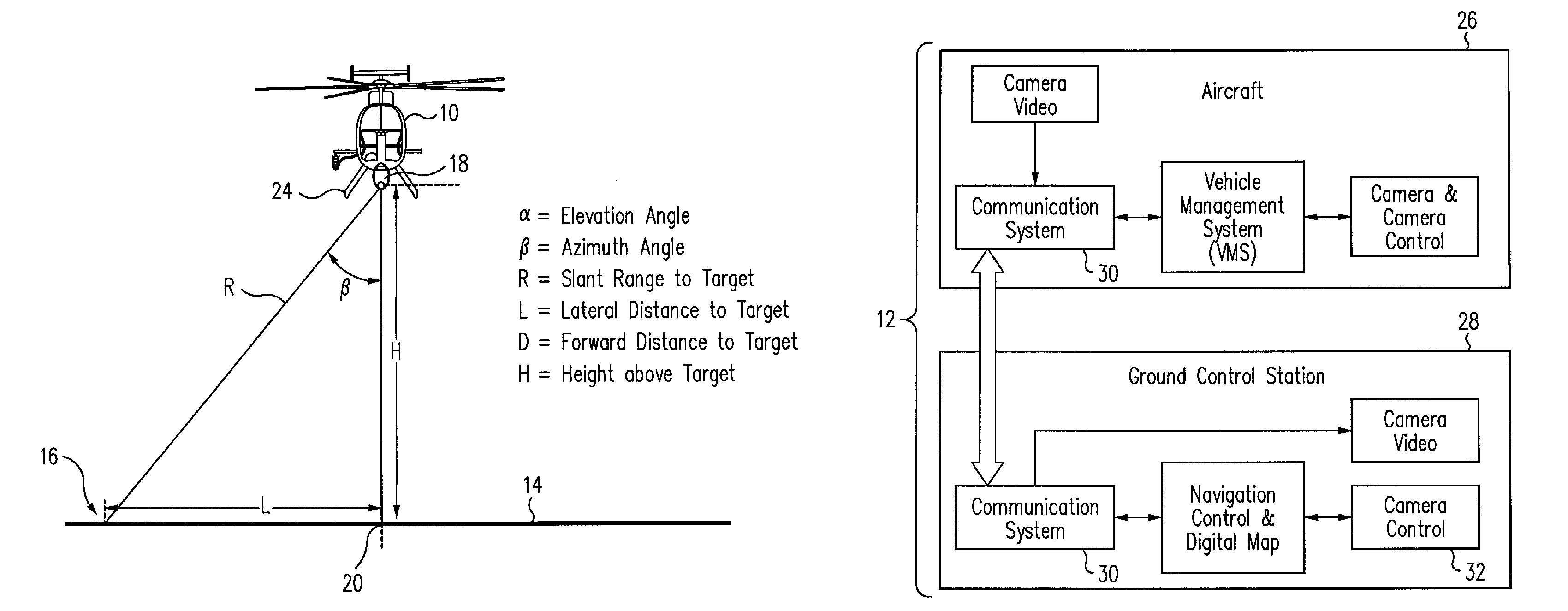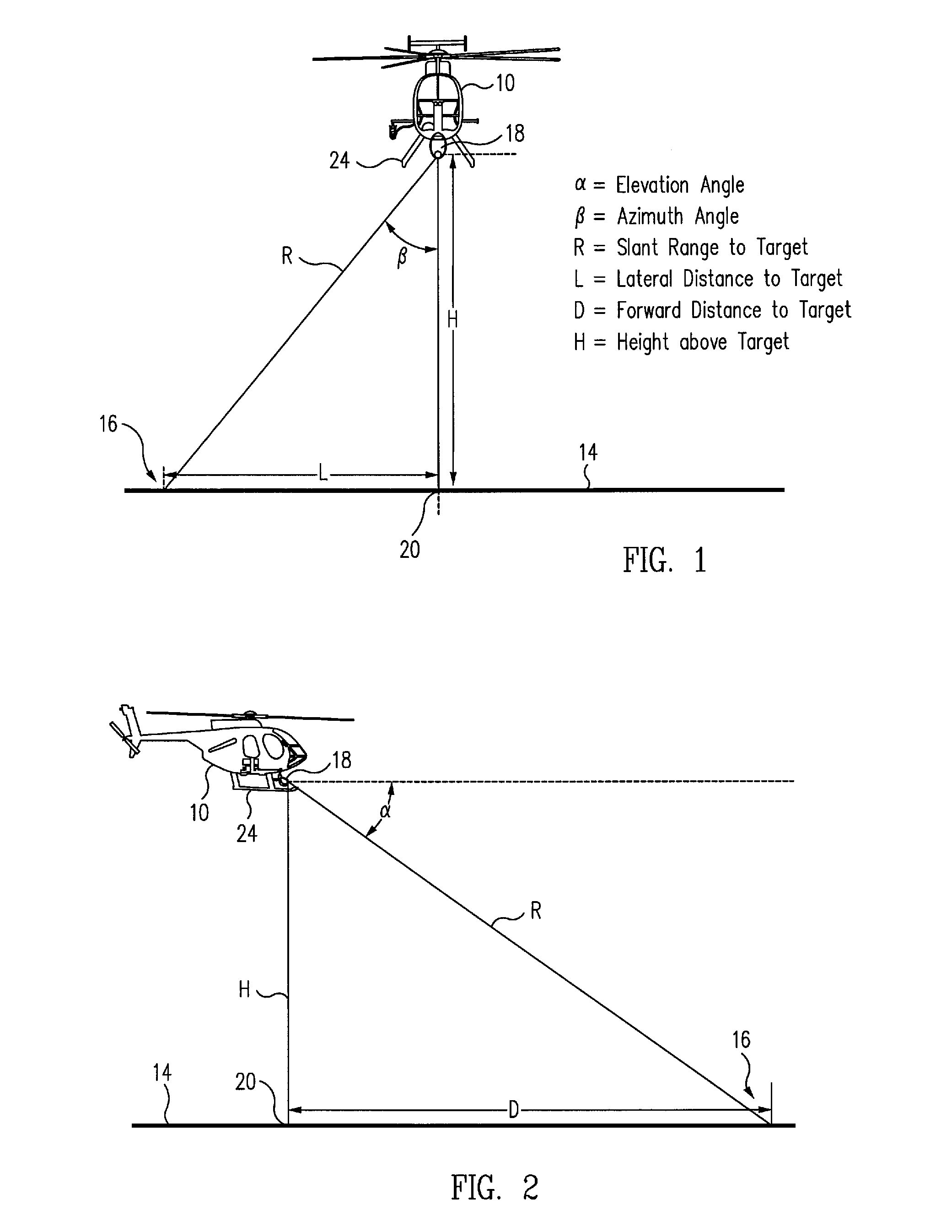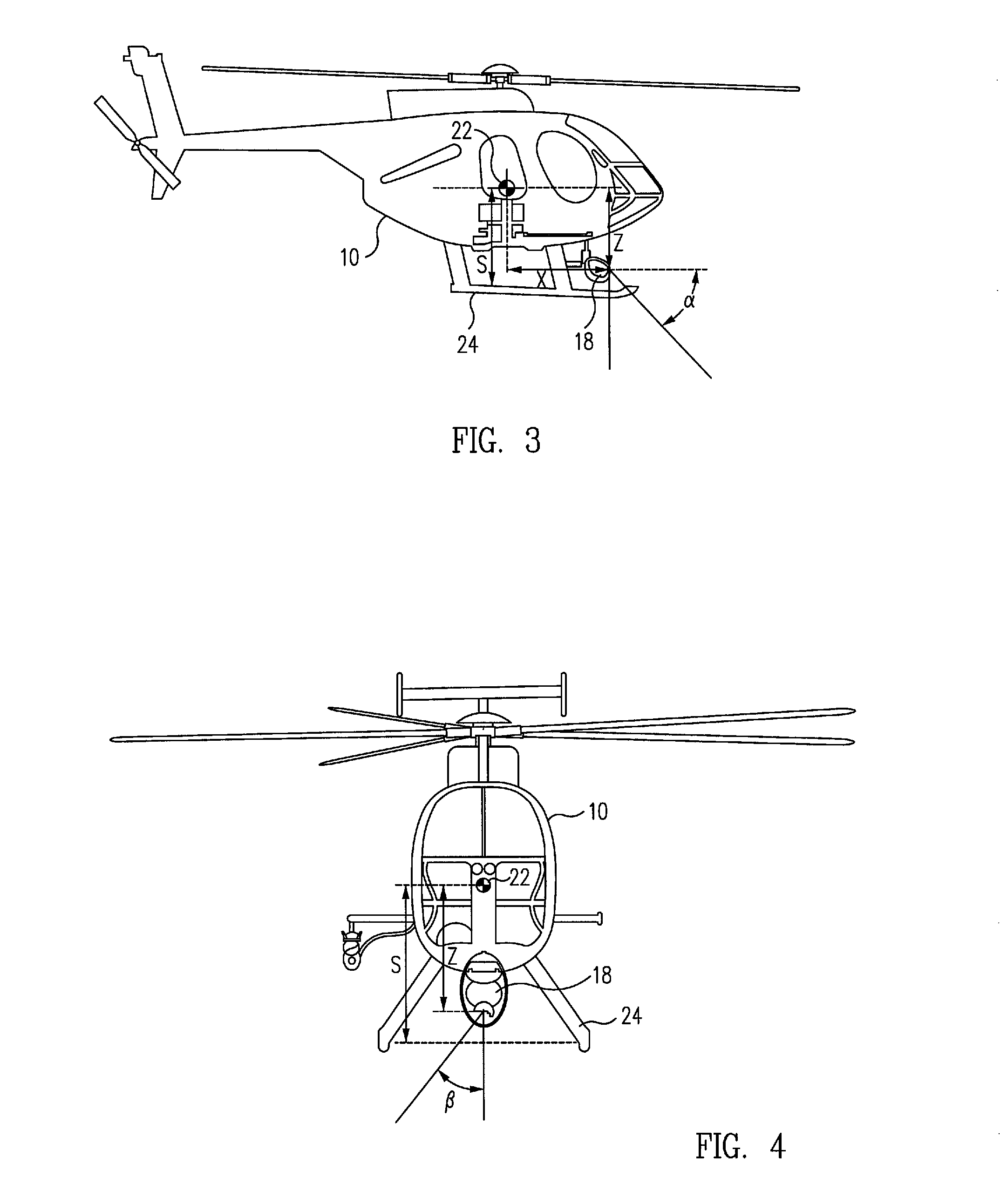Aircraft precision approach control
a precision approach and control technology, applied in the direction of distance measurement, navigation instruments, instruments, etc., can solve the problems of difficult to obtain an accurate above-ground-level (agl) altitude, inconvenient use, and increased difficulty in obtaining agl altitude accuracy, etc., to achieve simple, inexpensive solution, and great control of helicopters.
- Summary
- Abstract
- Description
- Claims
- Application Information
AI Technical Summary
Benefits of technology
Problems solved by technology
Method used
Image
Examples
Embodiment Construction
[0029]FIGS. 1 and 2 respectively illustrate front and right side elevation views of an aircraft 10, e.g., a helicopter, equipped with an exemplary embodiment of a command and approach control system 12 (see FIG. 5) in accordance with the present invention, shown operating over a ground or water surface 14 and relative to a selected target point 16 located on the surface 14. The helicopter may be manned, e.g., by a pilot, or may be unmanned and controlled by an operator located at a remote command center.
[0030]The novel command and control system 12 comprises a camera 18, including a rangefinder, preferably a laser rangefinder, disposed aboard the aircraft 10 for measuring an azimuth angle β, an elevation angle a and a line-of-sight (LOS) distance, or slant range, from a fixed point on the aircraft relative to the selected target point 16 on the surface 14 below the aircraft, a conventional navigation system (not illustrated) disposed aboard the aircraft for measuring the latitude an...
PUM
 Login to View More
Login to View More Abstract
Description
Claims
Application Information
 Login to View More
Login to View More - R&D
- Intellectual Property
- Life Sciences
- Materials
- Tech Scout
- Unparalleled Data Quality
- Higher Quality Content
- 60% Fewer Hallucinations
Browse by: Latest US Patents, China's latest patents, Technical Efficacy Thesaurus, Application Domain, Technology Topic, Popular Technical Reports.
© 2025 PatSnap. All rights reserved.Legal|Privacy policy|Modern Slavery Act Transparency Statement|Sitemap|About US| Contact US: help@patsnap.com



